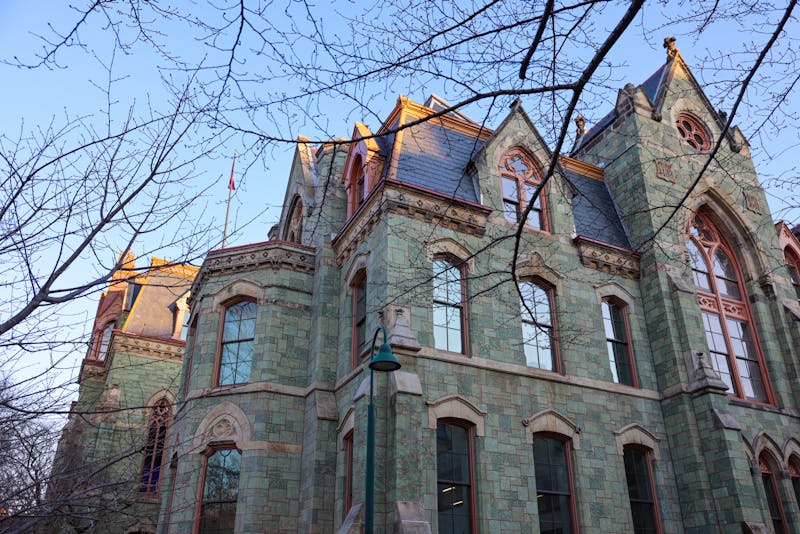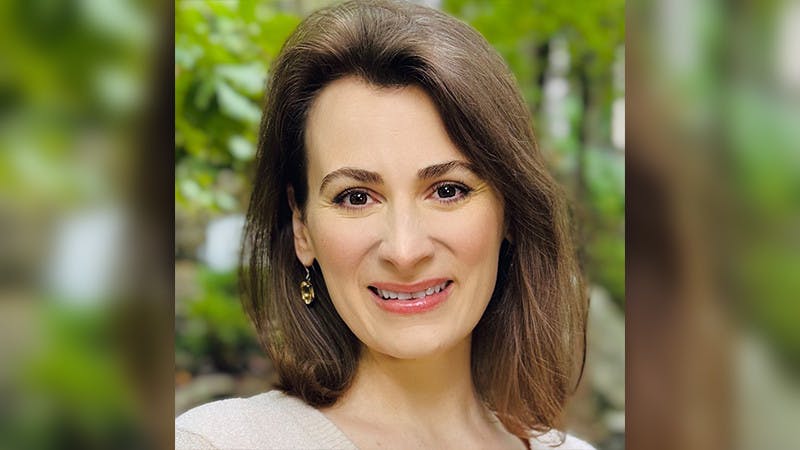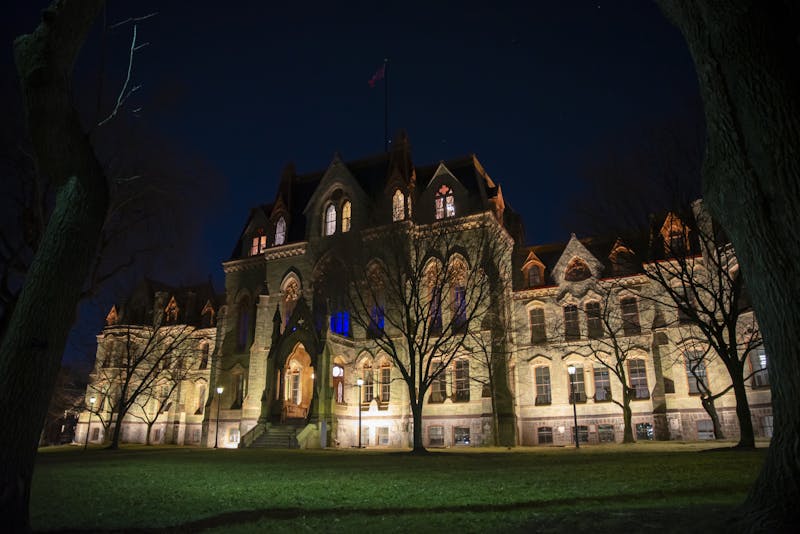Change is coming to 38th and Spruce streets.
The Philadelphia Streets Department is set to install “bumpouts” to make it easier for pedestrians to cross the intersection — which has been plagued by a string of five accidents — by the end of the year.
The bumpouts will cause the curb and sidewalk at each corner to jut out into the street more than they currently do, lessening the distance needed for pedestrians to cross the street.
Streets Department Public Relations Supervisor Keisha McCarty-Skelton said that the decision to install the bumpouts came after an internal study from the city of crash data and possible safety improvements.
These new bumpouts would be the first significant change in recent history at the intersection designed solely to make pedestrian crossing easier.
Despite the recent uptick in accidents this semester — which includes six hospitalization and four student pedestrians struck by cars — McCarty-Skelton said that discussions had already started before the spurt of accidents began.
Vice President for Public Safety Maureen Rush applauded the decision. “This is something the University has been waiting to have done for many, many years,” she said.
The Streets Department decided to proceed with the bumpouts in January, and the engineering design began in March. Construction should begin in the next several months and be completed by the end of the calendar year.
In addition to the proposed bumpouts from the Streets Department, the Division of Public Safety has made several decisions aimed to keeping the intersection safer.
It has increased traffic patrols at the intersection in light of the recent increase in accidents. DPS officers are now at the intersection between 9 and 10 a.m., as well as between 12 and 12:30 p.m., both of which are considered busy periods at the intersection, Rush said.
DPS also placed several orange safety barrels outside of Wawa aimed to prevent cars from entering the bike lane that runs along Spruce St. The barrels help solve two ongoing issues — drivers impeding the bike lane on Spruce Street, as well as cars illegally parked outside of Wawa.
These efforts are in addition to the driver infraction enforcement that DPS conducts around campus.
A 2009 campus transportation study commissioned by DPS and Facilities and Real Estate Services listed 38th and Spruce streets as one of the most problematic intersections around campus.
Adrienne Eiss, project manager for the study, mentioned the intersection’s high traffic and pedestrian volume on campus as possible causes for its status as a problematic intersection.
According to Pennsylvania Department of Transportation statistics, an average of 10,583 cars travel daily through the intersection on 38th Street, along with another 7,993 on Spruce.
Eiss also mentioned the two-way traffic as one reason the intersection has had problems. “Anytime you have two two-way streets, especially when there are left turns, there are bound to be issues,” Eiss said. Many other roads near campus — including Walnut, Chestnut, 34th and 40th streets — are all one-way.
Lou Belmonte, a traffic engineer for PennDOT, said that while accidents have been up recently, “this is not dissimilar with the rises and falls in crashes at a major urban intersection such as this.”
Penn has little control over what happens to the streets close to campus. However, there are numerous instances in the past of Penn lobbying government entities to achieve traffic-related progress.
Rush cited an example from a year and a half ago when DPS observed a trend of cars “dangerously” taking U-Turns at 38th and Spruce streets. When DPS looked at traffic laws, though, it realized that the drivers’ actions, while potentially harmful, were also completely legal.
In response to this, DPS helped convince PennDOT to install “No U-Turn” signs at the intersection.
There are times, Rush said, when the University has even funded several traffic projects that PennDOT or the Streets Department undertook, such as for installing street lights and traffic signals.
Almost any change at Philadelphia intersections requires a collaboration between PennDOT, a state-run organization, and the city-run Streets Department. Typically, the Streets Department handles traffic signals, while PennDOT handles roadway projects and signs.
Belmonte said that PennDOT’s role on Philadelphia streets is usually based upon executing plans that the Streets Department has already created. Because 38th Street is considered a state highway — as are streets like Walnut and Chestnut streets — Belfonte said PennDOT would “most likely” be more involved in any plans involving that street.
Rush said that the intersection has seen “incremental improvements throughout the years,” a fact McCarty-Skelton agreed with, citing several examples of changes in recent years.
In 2008, a southbound left-turn signal for 38th Street was added to give drivers a safe opportunity to turn left. In 2011, a right turn lane for northbound traffic was added. Last year, the timings of traffic signals were altered to allow for more northbound traffic.
While the bumpouts might add to pedestrian safety, Rush said she is withholding judgement about whether this semester’s rise in traffic accidents at 38th and Spruce streets represent a trend.
“Time will tell if this uptick is going to be a continual thing,” Rush said, “or if it is just a one-time increase.”
The Daily Pennsylvanian is an independent, student-run newspaper. Please consider making a donation to support the coverage that shapes the University. Your generosity ensures a future of strong journalism at Penn.
DonatePlease note All comments are eligible for publication in The Daily Pennsylvanian.







